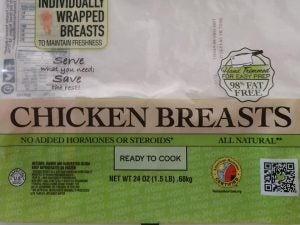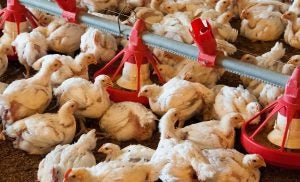It’s no secret that chicken is a huge part of our everyday lives. Available on pretty much any menu in any restaurant, there’s no shortage of this delicious protein rich meat. But how do we get so much chicken? Why is it so tasty? Why are some chickens bigger than others? The myths around production in the poultry sector have swirled for decades, but a lot of popular myths just won’t die. So it’s important to delve into the actual facts about chickens and to send the myths about poultry out to pasture.
Here are the top five myths about chickens that need to be debunked:
1. They’re pumped full of hormones. False, false, false! Chickens and bigger and juicier today as a result of better science, health, and genetics. Hormones have not been used in the poultry world for around 70 years. Why? They’re just no needed. For more info, this article from the University of Georgia explains seven reasons why chickens are not given hormones. Whenever you read a chicken label that says, “no added hormones or steroids,” read the asterisk and fine print: *federal law strictly prohibits the use of hormones and steroids in poultry. It totally doesn’t exist and is just a marketing label designed to steer you away from a competitor’s identical food product.

2. They’re drenched and washed in a chlorine solution. The alarming fearmongering headlines have swirled for years, but the reality is that the food safety standards for chicken are extremely strong. According to the National Chicken Council, less than 5 percent of poultry processing plants use some rinses and sprays that contain chlorine, however, it is not found in the finished product and is a completely safe and effective way to clean and sanitize processing equipment. If any chlorine is used, the dose makes the poison and is measured at parts per billion — there’s literally more chlorine in your drinking water than there is used in chicken.
3. They’re pumped full of antibiotics. It’s not uncommon nowadays to see the words, “no antibiotics ever” on a package of chicken, because their comfort and housing has become so advanced nowadays, their health has improved dramatically over the years. Biosecurity, better lighting, ventilation, feed, water efficiency, and so much more have created a much better environment for them, which is why you can find them with no antibiotics ever.

4. They’re raised in cruel “factory farms.” Look, the term “factory” farm is a slang term used to make it seem like your food is raised in cruel “factory” type conditions run by blank faceless corporations. This couldn’t be further from the truth! Ninety-eight percent of farms are still family farms that have just gotten bigger over the years and have implemented newer and better technology. Learn more about this here. It’s also worth noting that all meat chickens are raised cage-free, but they tend to huddle together in one area regardless — especially around feeders
5. Organic chicken is better. This may or may not be true depending on the farm, but from a commercial production standpoint, there’s really not much difference — aside from the slight distinction that conventional chickens require around 0.78 to 0.85 square feet per bird, (depending on the season; there will be more in a barn during winter months to keep them warmer) while organic chicken requires 0.85 square feet per bird. It’s barely a difference. Organic poultry production also rarely lets its birds get as big as conventional, but the end results of taste and animal health are more tied to genetics and the housing environment than anything else. More on organic chicken production here.
Overall, the science behind healthy chicken is absolutely incredible! I’d encourage anyone who wants to learn more to reach out the National Chicken Council, university poultry science departments (like this article I wrote from Auburn University), or ask the companies and farmers that produce for them.
Michelle Miller, the Farm Babe, is a farmer, public speaker and writer who has worked for years with row crops, beef cattle, and sheep. She believes education is key in bridging the gap between farmers and consumers.



